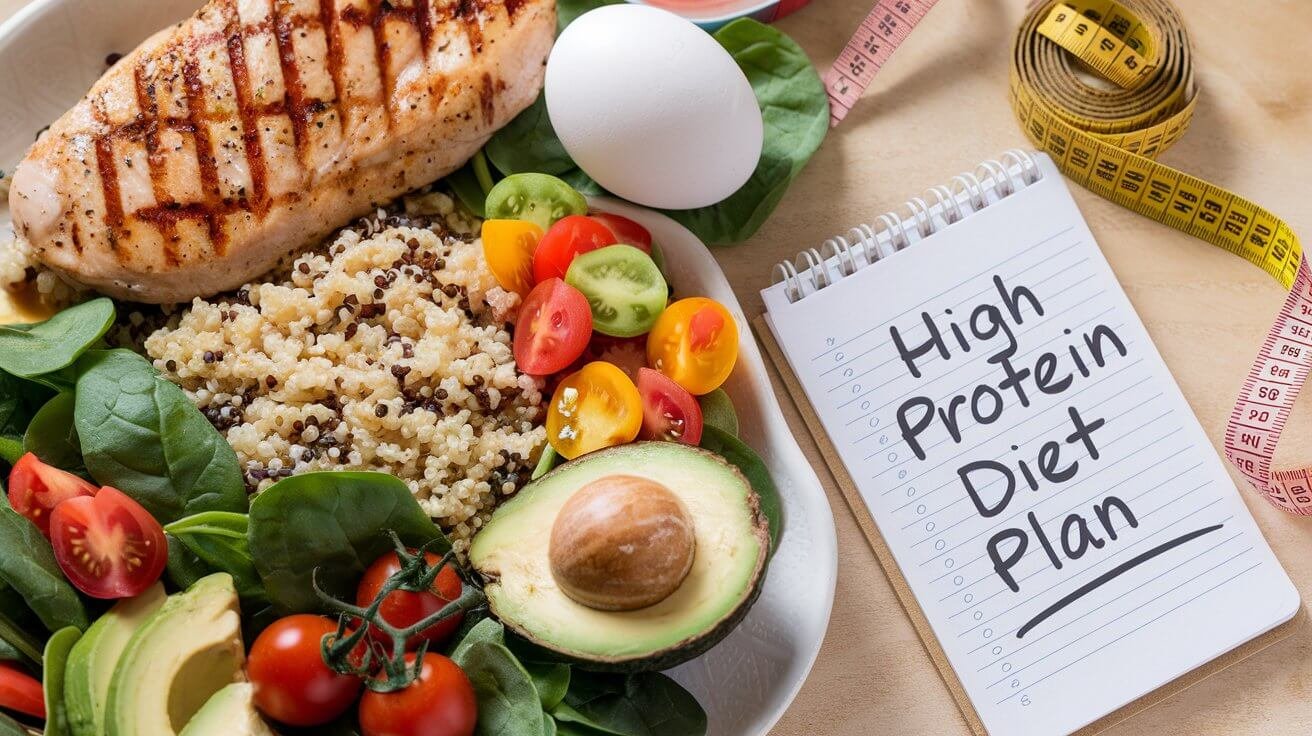Explore Healthy Living
Are you tired of diets that leave you feeling hungry, deprived, and frustrated? The solution might be simpler than you think. A high-protein diet is not just a fad; it’s a proven strategy to help you lose weight effectively while staying energized and satisfied. Unlike restrictive diets, a high-protein plan allows you to enjoy a variety of delicious foods that support your body’s needs and help you burn fat.
In this guide, I’ll take you on a step-by-step journey to understanding and implementing a high-protein diet for weight loss. Whether you’re new to this or looking to refine your approach, this guide will empower you to take control of your health and transform your body. Let’s get started!
What Is a High-Protein Diet?
A high-protein diet is more than just a buzzword; it’s a way of eating that prioritizes protein as the main macronutrient. But what does that mean, exactly? In simple terms, it’s a diet where a significant percentage of your daily calories comes from protein-rich foods. Most people’s diets include about 10-15% protein, but in a high-protein diet, that number typically jumps to 20-35% or even higher, depending on individual needs and goals.
Protein is a powerhouse nutrient. It’s not just about building muscles; it’s about keeping your body functioning optimally. Proteins are made up of amino acids, which are essential for repairing tissues, producing enzymes, and supporting a healthy immune system. When it comes to weight loss, protein is a game-changer. It helps you feel full for longer, reducing your calorie intake naturally without the constant battle against cravings. By making protein the star of your meals, you’ll find it easier to stick to your calorie goals and achieve sustainable weight loss.
Benefits of a High-Protein Diet for Weight Loss
Let’s explore why protein is so effective for weight loss. Here are some of the key benefits, explained in more detail:
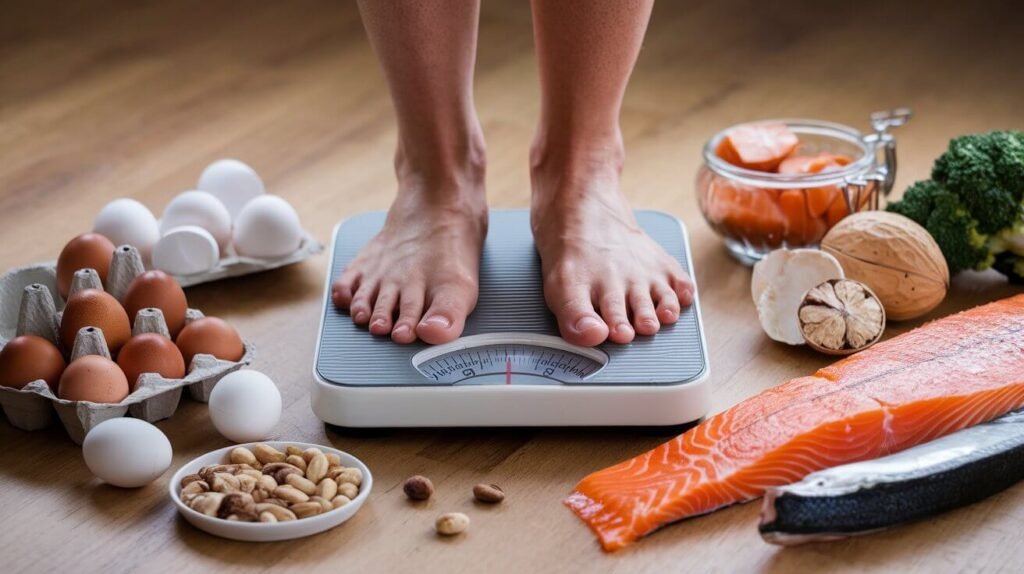
- Increased Satiety: Have you ever eaten a meal, only to feel hungry an hour later? That’s often the case with carb-heavy foods. Protein, on the other hand, takes longer to digest and signals your brain that you’re full. This means you’re less likely to snack mindlessly or overeat later in the day.
- Boosted Metabolism: Digesting food requires energy, a phenomenon known as the thermic effect of food (TEF). Protein has a higher TEF compared to fats and carbohydrates. This means your body burns more calories processing protein, giving your metabolism a little extra boost.
- Muscle Preservation: When you lose weight, it’s important to ensure that the weight you’re shedding is fat, not muscle. Protein helps preserve lean muscle mass, which is crucial for maintaining strength and keeping your metabolism high.
- Reduced Cravings: Protein influences hunger-regulating hormones like ghrelin and peptide YY, helping to reduce cravings and keep your appetite in check. Imagine saying goodbye to those late-night snack binges!
- Improved Body Composition: By promoting fat loss while maintaining muscle mass, a high-protein diet can help you achieve a toned and healthier physique.
How to Build a High-Protein Diet Plan
Creating a high-protein diet plan isn’t complicated, but it does require some thought and preparation. Here’s how to get started:
1. Determine Your Protein Needs
The amount of protein you need depends on your weight, activity level, and goals. A general guideline is to consume 0.8-1.2 grams of protein per pound of body weight. For example, if you weigh 150 pounds, aim for 120-180 grams of protein daily. If you’re highly active or trying to build muscle, you might need even more.
2. Balance Your Macronutrients
While protein is the star, don’t neglect fats and carbohydrates. These nutrients play critical roles in energy production and overall health. A balanced macronutrient ratio might look like 40% protein, 30% carbohydrates, and 30% fats. Adjust this based on your individual preferences and how your body responds.
3. Spread Protein Intake Throughout the Day
Don’t try to consume all your protein in one meal. Spread it across your breakfast, lunch, dinner, and snacks to maintain steady energy levels and avoid overwhelming your digestive system. For example, aim for 20-30 grams of protein per meal and 10-15 grams in snacks.
4. Incorporate Protein Into Every Meal
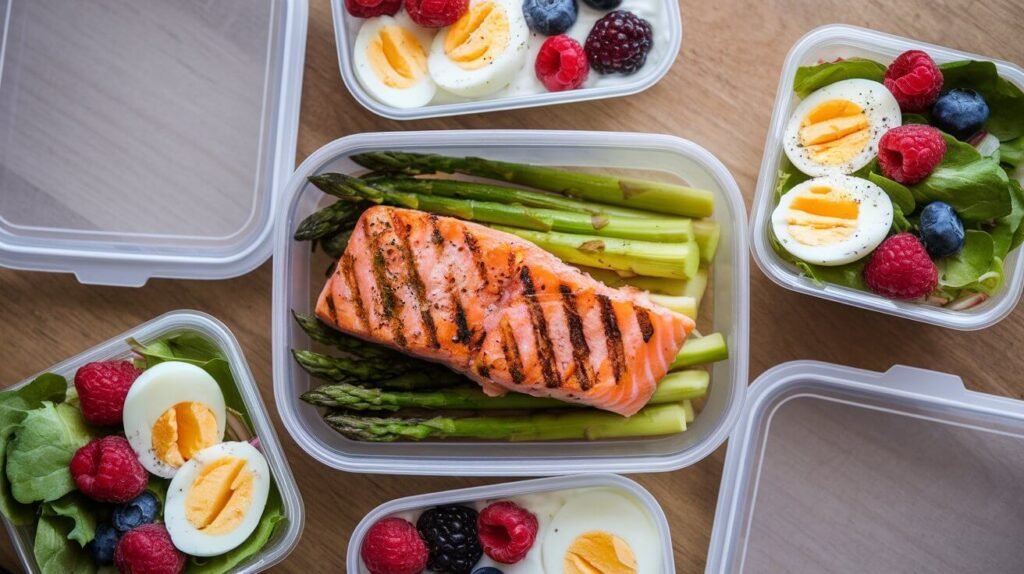
Get creative with your meals! Think beyond plain chicken breast. Add eggs to your breakfast, lentils to your lunch, and grilled fish to your dinner. A variety of protein sources will keep your diet interesting and nutrient-rich.
5. Track Your Progress
Monitor how your body responds to the diet. Use tools or apps to track protein intake, energy levels, and changes in body composition. Adjust your plan as needed to stay aligned with your goals.
Best High-Protein Foods to Include
Here’s a closer look at some of the best protein-rich foods to incorporate into your diet:
1. Lean Meats: Chicken breast, turkey, lean beef, and pork tenderloin are excellent choices. They’re versatile and packed with high-quality protein.

2. Fish and Seafood: Salmon, tuna, shrimp, and cod are not only rich in protein but also provide essential omega-3 fatty acids, which support heart and brain health.
3. Eggs: A true superfood, eggs are affordable, easy to prepare, and nutrient-dense. Don’t skip the yolk; it’s full of vitamins and healthy fats.
5. Dairy Products: Greek yogurt, cottage cheese, and low-fat milk are great sources of protein and calcium.
6. Plant-Based Sources: Lentils, chickpeas, tofu, tempeh, and quinoa are perfect for vegetarians and vegans. They’re also packed with fiber and other essential nutrients.
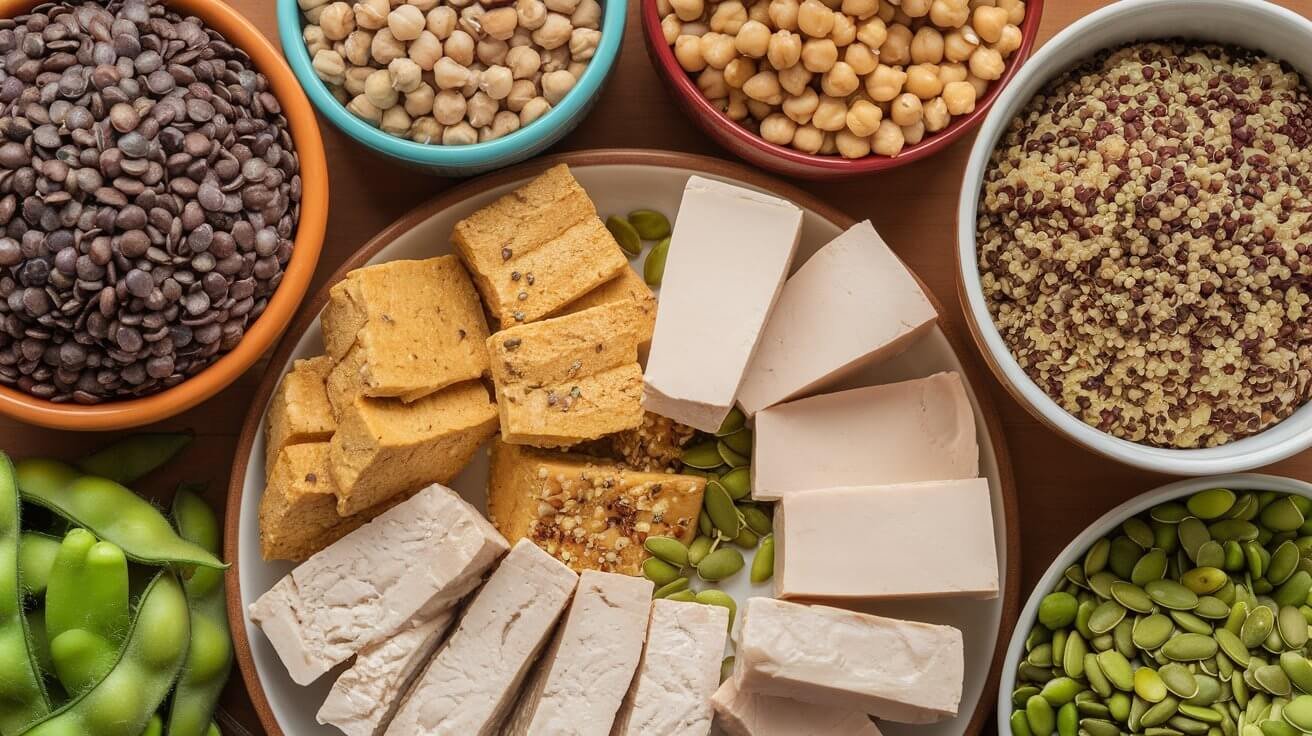
7. Protein Supplements: Protein powders and bars can be convenient for busy days, but they shouldn’t replace whole foods in your diet.
A Sample 7-Day High-Protein Diet Plan
Here’s a detailed, day-by-day plan to get you started:
Day 1
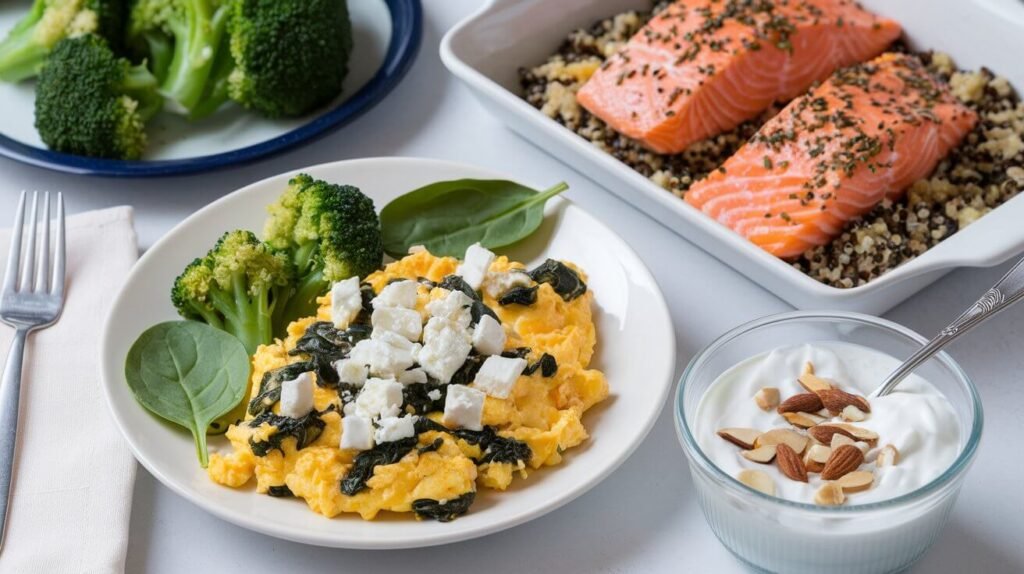
- Breakfast: Scrambled eggs with spinach and feta, served with a side of berries. The eggs provide high-quality protein, while the spinach adds iron and fiber.
- Snack: Greek yogurt with a handful of almonds. A perfect combination of protein and healthy fats.
- Lunch: Grilled chicken salad with mixed greens, avocado, and olive oil dressing. This meal is satisfying and nutrient-packed.
- Snack: Hard-boiled eggs with carrot sticks. Simple, portable, and filling.
- Dinner: Baked salmon with quinoa and steamed broccoli. A balanced, protein-rich meal to end your day.
Day 2
- Breakfast: Protein smoothie with whey protein, banana, and almond milk. Quick, delicious, and energizing.
- Snack: Cottage cheese with cucumber slices. Light but satisfying.
- Lunch: Turkey and avocado wrap with a side of cherry tomatoes. Easy to prepare and packed with nutrients.
- Snack: Edamame sprinkled with sea salt. A plant-based protein powerhouse.
- Dinner: Grilled shrimp with cauliflower rice and sautéed asparagus. Flavorful and low in carbs.
Days 3-7
Continue similar patterns by rotating protein sources like lean beef, lentils, tofu, and cod. Experiment with side dishes like roasted sweet potatoes, sautéed kale, or fresh salads.
Common Mistakes to Avoid
- Overeating Protein: More isn’t always better. Consuming excessive protein can lead to unnecessary calorie intake and strain on your kidneys.
- Neglecting Fiber: A high-protein diet can sometimes be low in fiber. Balance your meals with plenty of vegetables, fruits, and whole grains.
- Ignoring Hydration: Protein metabolism requires water. Stay hydrated to support digestion and overall health.
- Skipping Variety: Eating the same foods can lead to boredom. Experiment with different protein sources and recipes.
Practical Tips for Success
- Meal Prep: Spend a few hours each week preparing meals to avoid last-minute unhealthy choices.
- Track Your Intake: Use apps or journals to monitor your protein and calorie intake. This helps you stay on track.
- Experiment with Recipes: Keep your meals exciting by trying new recipes and flavors. Think marinated chicken, spicy lentil stews, or herbed fish fillets.
- Stay Consistent: Weight loss is a journey. Stick to your plan, and don’t let small setbacks derail you.
Conclusion
A high-protein diet plan is a powerful tool for weight loss, but it’s also a lifestyle that can transform your relationship with food. By focusing on nutrient-dense, protein-rich meals, you’ll feel fuller, more energetic, and better equipped to tackle your goals.
The step-by-step guide and meal plan provided here are your roadmap to success. Start small, stay consistent, and watch as your body transforms—one delicious, protein-packed meal at a time!

